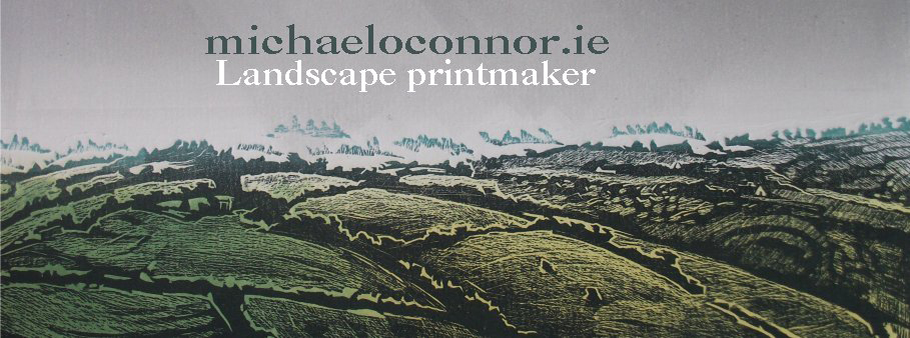Printmaking today [ etching, wood-engraving , linocutting , lithography and more ] though having more practitioners than ever , is still not an art well-defined in the public mind . With mass-reproduction of art-works established for over a century , folk will look at a print and ask , where is the original ? Quite a challenge .Er.... .this is the original .

Show them artisanal scenes like this [ I actually have two arms ], a physical print on a fine heavy paper with sexy deckled edges, the time spent on block-preparation and editioning , the traces of hand and eye on every piece - and maybe we've begun to explain .
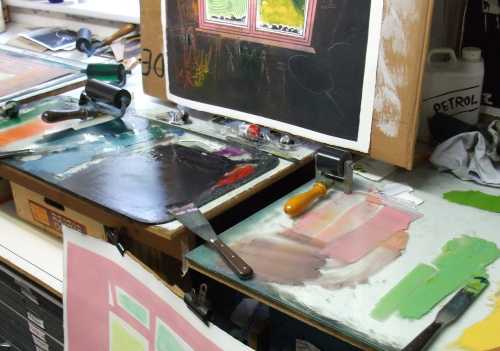

I work almost entirely from pencil drawings .If I do take a photograph of something exciting met during a day, I can never retrieve that excitement on later viewing ; so that the photo serves only as a reminder.
Of course I'm glad enough that this works to make a personal style. It also helps to build and maintain the vigour of an image through the processes of transferring to a block , cutting and printing .
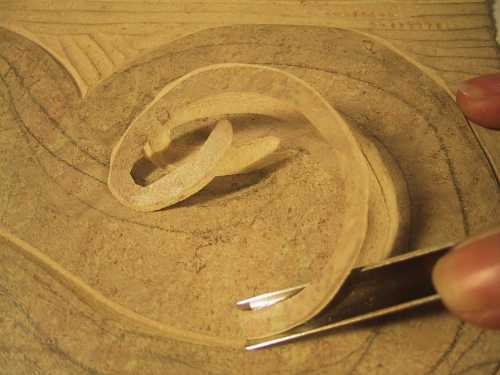
Good thick [ battleship ] lino is impossible to come by any more . Shame . I like carving into those old pieces more like wood. Mind you , the longer you keep them , the harder they get -if that's what suits .
Of course , if you want the print the same way round as your drawing you must put it onto the intended block in reverse ...another risk to the energy of the image I've tried all sorts of tricks for this .Make a mirror-image of the drawing with camera/computer/photocopier, then , once you have it on paper at the right size , roll a light layer of ink on the back , lay it on the block and draw over it .A bit fussy , and it takes a day or two for the ink-lines to dry , but it can keep the proportions of your starter-drawing , and be a guide to go at it again .
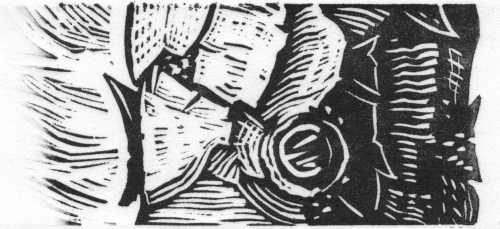
The pure and simple pleasure of relief printing is to work in black ink on white paper .There's a lifetime's work in it . But to push the medium into colour..OK , three or four lifetimes.
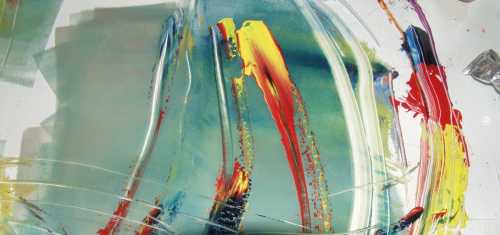
Work in Black and White inevitably defines things The hard cut edge.carries this defining into colour work . My ways of softening this are -blended colours on open or cut areas , the use of extender/medium , and scratching and biting techniques that can produce more subtle textures and edges .[ see recent print Fowlers' Elder .]
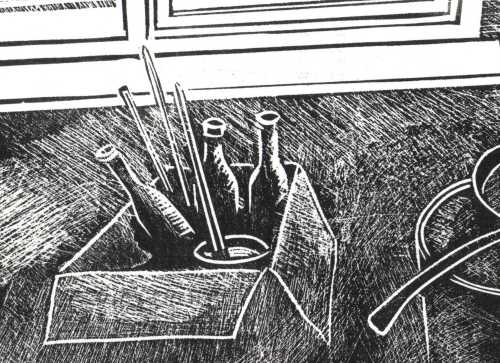
To make a second or third colour block for an image , I take a good inky print on some shiny [ less absorbent ] paper. Then I place the wet print face-down on a fresh piece of lino [ larger - trim it afterwards ] and print again . Presto - there is your cutting-guide for the next colour.
Again , it takes a couple of days to dry, but we be old-fangled and slow, lord preserve us .
